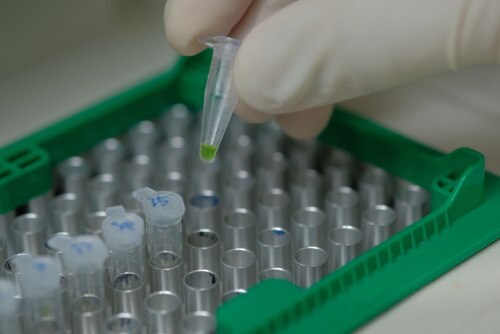Standard PCR Protocol
How to do PCR
A standard polymerase chain reaction (PCR) setup consists of four steps:
- Add required reagents or mastermix and template to PCR tubes.
- Mix and centrifuge.
*Add mineral oil to prevent evaporation in a thermal cycler without a heated lid. - Amplify per thermo cycler and primer parameters.
- Evaluate amplified DNA by agarose gel electrophoresis followed by ethidium bromide staining.

These steps are presented below in greater detail along with materials and reagent selection tips. This is a basic PCR protocol using Taq DNA polymerase.
PCR Steps and Essential PCR Components
Troubleshooting a PCR reaction involves many factors. Watch this animation to learn how selecting the right components and cycling conditions for your needs can help achieve optimum results.
Find additional protocols for other polymerases or advanced PCR techniques in the Protocols section of our PCR Technologies Guide.
Learn more about standard PCR, including what it is, on our PCR Basics page.
Reagents: What Is Needed for PCR?
What is Taq Polymerase?
Taq DNA polymerase is a thermostable enzyme derived from the thermophilic bacterium Thermus aquaticus. It is commonly used to amplify DNA fragments in PCR. The enzyme is in a recombinant form, expressed in E. coli. It is able to withstand repeated heating to 95 °C (as is demanded by the PCR technique) without significant loss of activity. The enzyme has a molecular weight of approximately 94 kDa by SDS-PAGE with no detectable endonuclease or exonuclease activity. It has 5'→3' DNA polymerase activity and 5'→3' exonuclease activity. Each lot of Taq DNA Polymerase is tested for PCR amplification and double-stranded sequencing. The enzyme is supplied at 5 units/µL and comes with an optimized 10x reaction buffer.
Standard Taq DNA Polymerase
Use the table below to select an appropriate mix of Taq DNA polymerase for your reaction conditions. Choose from clear or red dyed formulations with and without magnesium chloride (MgCl2) or a pre-prepared readymix or master mix with buffer and dNTPs.
Unit Definition: One unit incorporates 10 nmol of total deoxyribonucleoside triphosphates into acid precipitable DNA in 30 minutes at 74 °C.
Procedure: Steps of PCR
The optimal conditions for the concentration of Taq DNA polymerase, template DNA, primers, and MgCl2 will depend on the system being utilized. It may be necessary to determine the optimal conditions for each individual component. This is especially true for the Taq DNA polymerase, cycling parameters, and the MgCl2 concentration. It is recommended the enzyme and the MgCl2 be titrated to determine the optimal efficiency.
- Add the reagents to an appropriately sized tube in the order provided in the table. (Select appropriate table for reaction setup: standard or readymix reagent.) For a large number of reactions, a mastermix without the template should be set up and aliquoted into reaction tubes. At the end, template should be added to appropriate tubes.
Standard PCR Reaction
*Buy buffer and Taq polymerase together: D1806, D4309 or D4545
Readymix PCR Reaction
2. Mix gently by vortex and briefly centrifuge to collect all components to the bottom of the tube.
Note: Add 50 µL of mineral oil to the top of each tube to prevent evaporation if using a thermal cycler without a heated lid.
3. Amplify. The amplification parameters will vary depending on the primers and the thermal cycler used. It may be necessary to optimize the system for individual primers, template, and thermal cycler.
Typical Cycling Parameters
25-30 cycles of amplification are recommended.
4. The amplified DNA can be evaluated by agarose gel electrophoresis and subsequent ethidium bromide staining.
Note: Mineral oil overlay may be removed by a single chloroform extraction (1:1), recovering the aqueous phase.
Reagents for Nucleic Acid Electrophoresis
- Agarose (precast gels, powder, etc.)
- Buffer such as MOPS-EDTA-sodium acetate, tris-acetate-EDTA (TAE) or tris-borate-EDTA (TBE)
- Gel loading solution and sample loading buffer for RNA
- Electrophoresis stain or dye such as ethidium bromide
Label License Statement
NOTICE TO PURCHASER: DISCLAIMER OF LICENSE
No license is conveyed with the purchase of this product under any of US Patents Nos. 5,804,375, 5,994,056, 6,171,785, 6,214,979, 5,538,848, 5,723,591, 5,876,930, 6,030,787, and 6,258,569, and corresponding patents outside the United States, or any other patents or patent applications, relating to the 5’ Nuclease and dsDNA-Binding Dye Processes. For further information contact the Director of Licensing, Applied Biosystems, 850 Lincoln Centre Drive, Foster City, California 94404, USA
如要继续阅读,请登录或创建帐户。
暂无帐户?